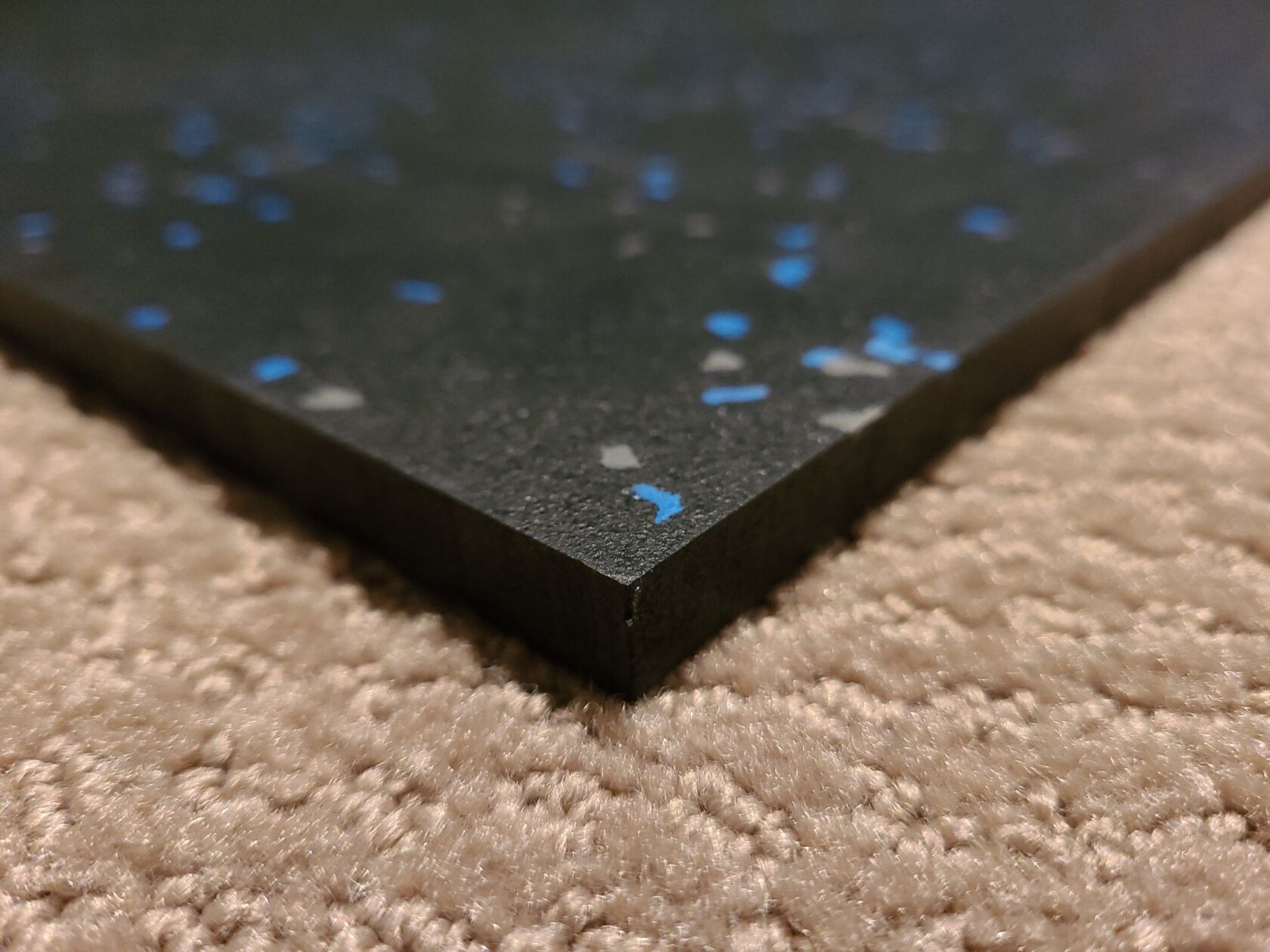By far, one of the most common questions we get as a specialty flooring company is, “can I install rubber flooring over existing carpet?” While the answer is: yes, you absolutely can! – there are a few things you need to know before you buy just any rubber flooring for your carpet. We’ve created this rubber flooring guide, answering some of your frequently asked questions below.

What you need to install rubber flooring over carpet
The process of laying rubber flooring down on carpet is fairly simple and doesn’t require many tools or adhesives. Removing and disposing of carpets can be time-consuming and costly. Further, removing carpet may not be an option if you’re renting or you want to keep the existing carpet for the future.
An advantage of laying rubber flooring over carpet is that it’s not permanent and it’s portable. So if ever in the future, you want to use the room for a different purpose or you’d like to use the rubber flooring elsewhere, it’s easy to remove and transport to a different location. The key to installing rubber flooring over carpet is that the product needs to be of quality material, heavy enough to lay flat and offers a tight fit and finish.
What type of rubber flooring can I use over carpet?
Here’s where the information can get a little muddled. Other specialty flooring companies will tell you that if you have high-pile, plush carpet, you’ll need to rip out the carpet altogether before installing rubber mats, tiles, or sheets. Often, this advice is given because the company does not offer the type of professional-grade, quality rubber flooring that you need. You can find more details on installing rubber flooring on top of high-pile, plush carpet in this article.
The most important advice we can give you is, don’t put down just any rubber flooring on top of the carpet. If it’s not thick enough or provides a compressed fit, it can result in uneven flooring. We want to achieve stability and a good, solid surface, especially if you are using the room as a home gym, as uneven flooring can cause injury.
You have a few different options to cover the area or room you intend to use the flooring in:
- Pre-cut mats/sheets – Choose premium vulcanized construction with a compression fit, which means you won’t need to use adhesive or tape. This method is ideal for covering a large area, like a basement or den, but can certainly be used for smaller areas as well. For larger areas, sheets are a great time-saving alternative to tiles.
- Tiles – Comes in an interlocking format or straight-edge. Both offer a smooth and seamless finish. Tiles are easy to disassemble, transfer to a different space when needed, and you can purchase more to add to space.
If you have low-pile carpet
Installing rubber flooring overtop flat, low-pile carpet is a breeze. You have many, many options available to you and the prep work is minimal. Start with a clean space, vacuum the floor, and move everything out of the room for an easy install. Be aware that if you are installing rubber flooring directly on top of the carpet, it may tint some light-coloured carpet. We recommend placing an underlay to act as a barrier between the carpet and rubber flooring.
If you have plush, high-pile carpet
Now, if you have a fairly thick and soft carpet, your options are a little bit more limited, but it’s not impossible to do. Before you rip out your existing carpet, we recommend using thick plywood or another rigid base as a solid subfloor. Once you have a flat and sturdy subfloor, most rubber flooring options are available.
You can also use an ultra-thick rubber tile with a built-in subfloor, saving you time and money from installing a subfloor first.
Installing rubber flooring on other surfaces
The rule of thumb is, as long as the surface is flat and even, rubber flooring can work great. Keep in mind that rubber contours to the inconsistencies of the flooring underneath, which can lead to wrinkles and gaps, creating a hazard. We typically don’t recommend using rubber on top of:
- Grass
- Rocks
- Uneven concrete areas
- Uneven pavement
The good news is, rubber is highly versatile. If you’re unsure, we are ready to answer your questions and provide a solution.


